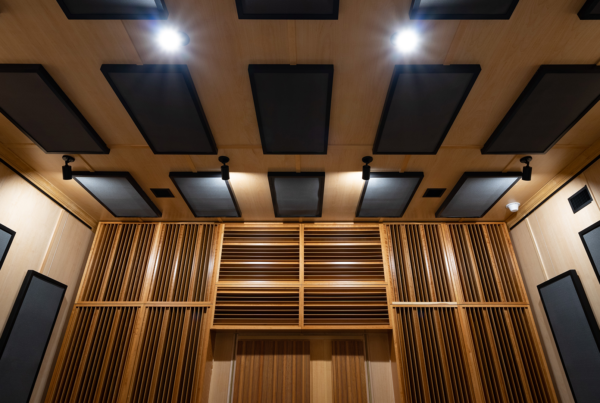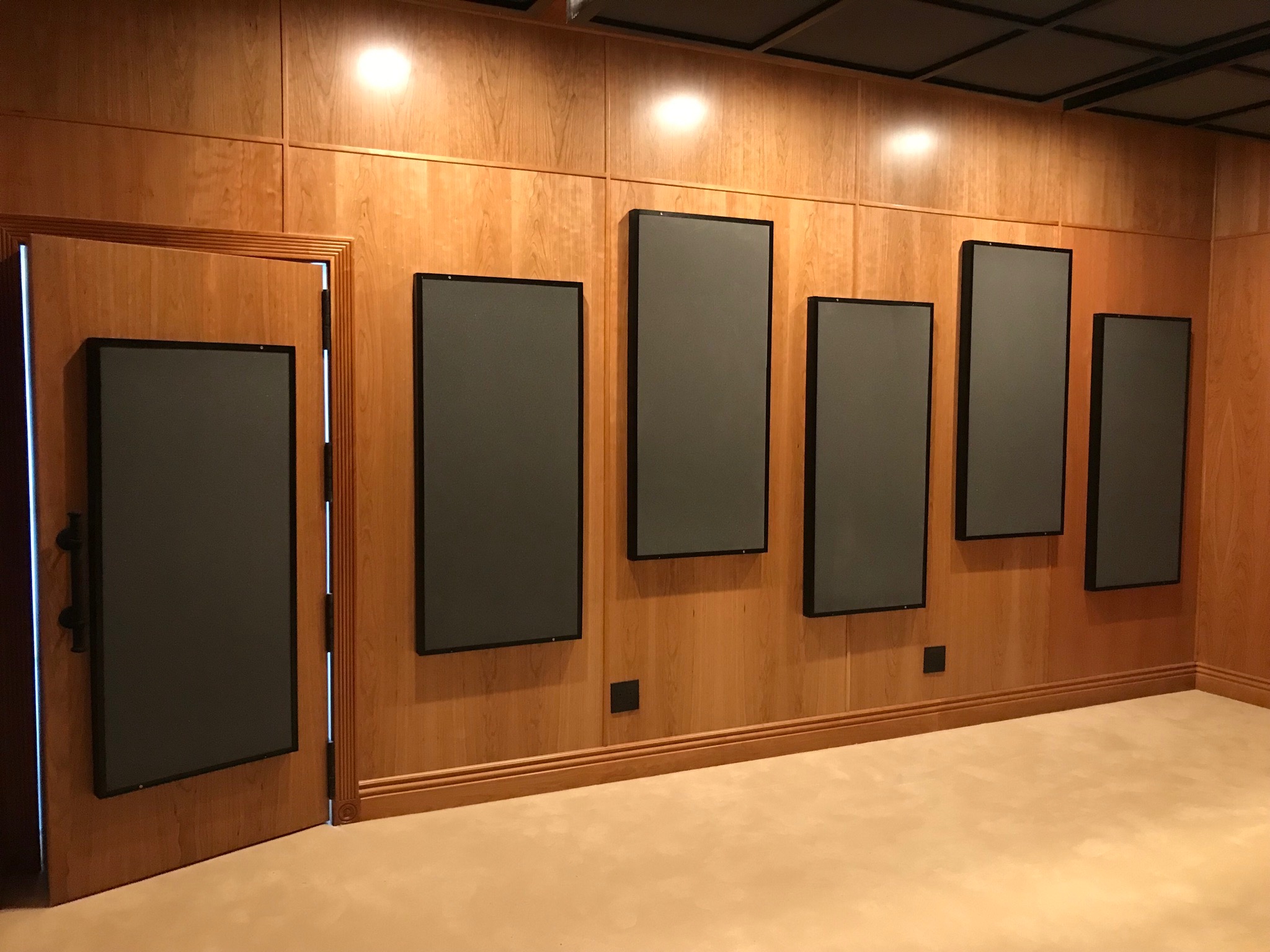Restaurant noise is everywhere. Restaurant noise reduction is nowhere. Ever been in a restaurant where you can’t hear the server and they can not hear you. Ever have an order wrong from lack of speech intelligibility is the restaurant. Did you ever ask for water with lemon and get lemon slices and no water. You get the idea. Restaurants spend most of their money on presentation value inside the restaurant. They want an atmosphere and food quality. Isn’t sound quality part of the presentation value of a restaurant? Isn’t the ability to communicate with staff critical to food presentation. Getting food you did not order doesn’t do the restaurants any good and I don’t see much benefit for the customer either. We need to have what engineers refer to as speech intelligibility ratings. The process involves reverberation and the associate decay of sound. The solution is restaurant noise reduction.
Reverberation Times
Reverberation is the summation of all the reflections from the wall surface areas. Each wall contributes 18% to the higher reverberation times. This is room distortion. This is the cause of not hearing your waiter or server. Restaurants usually have hard wall surface areas with glass windows and low ceilings. More money is spent on appearance than acoustics. Reverberation times or Rt-60 times for most restaurants is over 3 seconds. They need to be between 1 and 1.5 seconds. This means that sound stays around in room 3 seconds after the waiter asks for if you would like bread. High reflections or reverberation times interfere with what we call speech intelligibility. Speech intelligibility is an index that determines how many words in a 10-word sentence you can hear clearly. Restaurants need to have a speech intelligibility numbers at 80. This means you can hear 8 words out of every 10 spoken. the solution is restaurant noise reduction.
Reverberation: https://en.wikipedia.org/wiki/Reverberation
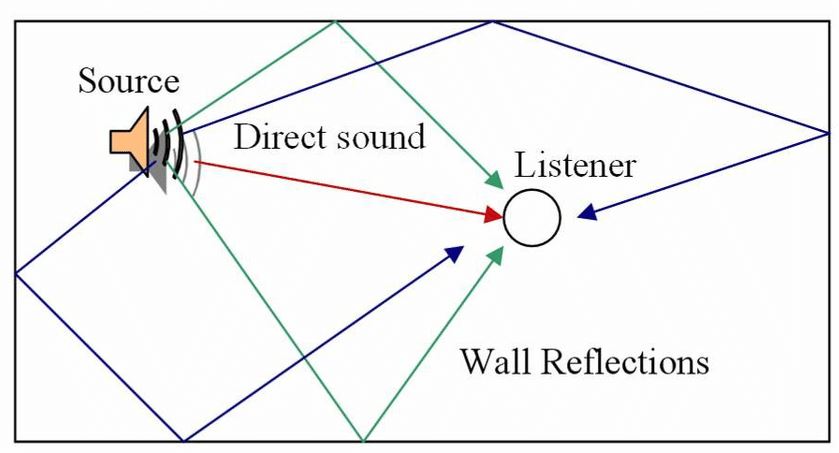
Sound Absorption
To treat high reverberation times we need to use sound absorption. Our only two types of acoustical treatments are absorption and diffusion. We must use absorption. We must cover up to 60 % of each wall’s surface area. This is the problem. No restaurant is going to give up that much wall surface area to manage reverberation times. If we do not have the wall surface areas to work with we must look to the ceiling. Lower reverberation time is achieved by covering the offending surface areas with absorption. We can hang panels from the ceiling if we have no wall surface area options. The best option is to treat both the ceiling and the 4 walls. Examine the pics of this Kyoto Sushi restaurant we did in Seal Beach. We were able to use both the walls and the ceiling surface areas. We lowered the reverberation times from an ear offending 3.5 seconds down to 1.5 seconds. Speech intelligibility rates improved by 80%. The solution is restaurant noise reduction.
Sound Absorption: https://en.wikipedia.org/wiki/Absorption_(acoustics)
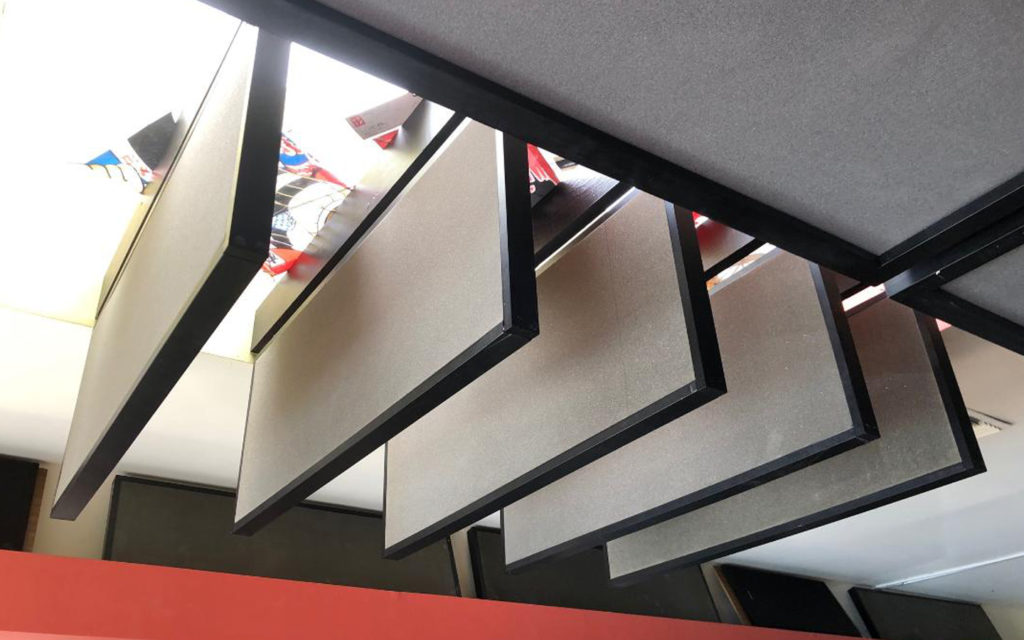
Open – Celled Foam
The most cost-effective absorption technology is open-celled foam. It is lightweight, high performing per square foot, lightweight, and easy to install. It can be covered with fabric that can match any room decor. It is also very predictable and consistent in its performance. When you are dealing with high reverberation times you need a sound absorption technology that has the proper rates and levels required for voice. Not all open-celled foams are created equal. Most foams in the marketplace are designed for noise management. They are not designed for voice. Human voice requires a certain rate and level of absorption in order to promote maximum speech intelligibility. Since you have to cover large surface areas you must have a sound absorption technology that absorbs enough at each octave band to have a large impact on our speech intelligibility index numbers. You need a consistent rate and level of absorption with no dips or peaks in the absorption curves required. Notice the performance of our foam compared to other “noise” companies’ products.
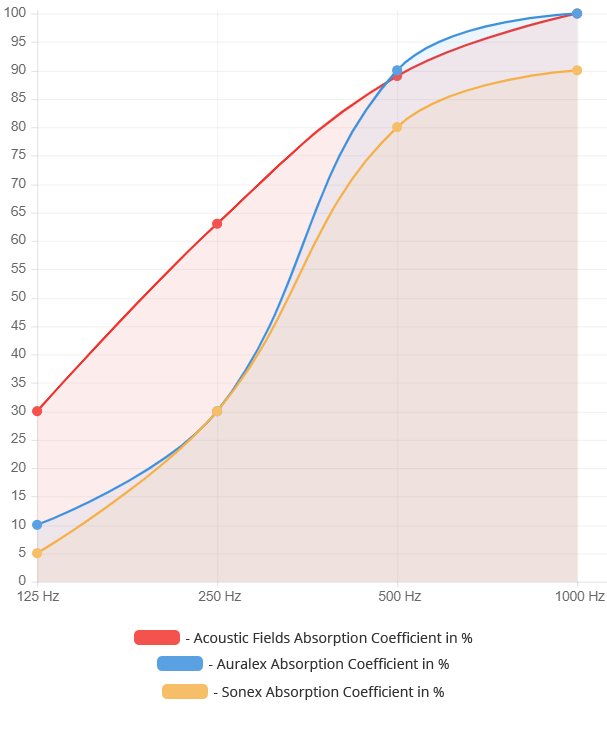
Rate and Level of Absorption
Not all foams are created equal. We spent 8 years developing our foam technology and it design parameters were always for music and voice. Music and voice are different than noise. Noise requires maximum absorption per square foot of materials. music and voice do not. Ever been in a room that sounds too “dead”. This is the result of over absorption and using a noise technology for music and voice rather than a technology that was specifically designed for music and voice. Our Studio Pro foam will give your restaurant the sound quality of a recording studio. Your customers will be able to hear the staff recite the specials of the day, and translate the order correctly to the kitchen. Customers will be able to converse with each other and people will consider the quiet of the restaurant when making their choice of where to go for lunch or dinner. The quietness of the restaurant will become a marketing point to use when customers make a dining choice.
About Us At Acoustic Fields: https://www.acousticfields.com/about/





